First known as a black metal musician in his native Norway, Varg Vikernes later became infamous for his murder of former bandmate Euronymous in 1993 as well as his neo-Nazism.

Ester Segarra/BurzumVarg Vikernes has been described as “Norway’s most notorious musician.”
“To live like we are supposed to, we need to listen to our blood, so to speak. Our paganism is in our blood, and to be able to create a positive and meaningful civilization in the future, on the ruins of the ‘Sodom and Gomorrah’ we live in today, we need to live in accordance with our blood.”
Out of context, Varg Vikernes can sound almost philosophical. He would also be the first person to tell you that he’s not a philosopher, which is, ironically, something a philosopher might say. But Vikernes is not best known for waxing poetic or for his deep insights. He is best known as a controversial musician — and a convicted murderer.
Varg Vikernes initially rose to prominence in the early 1990s, as Norwegian black metal first burst onto the scene, with his one-man project Burzum. At one point, he also joined another influential black metal band, Mayhem, as their bassist. And to say these bands were infamous would be a massive understatement.
American and British metal often dealt with themes of Satanism — and these themes were sometimes more performative than anything else — but Norwegian black metal bands leaned heavily into the country’s Norse heritage. The musicians often viewed Christianity as an affront to their traditional pagan beliefs, or their interest in Satanism. And some of them felt so strongly about their beliefs that they burned Christian churches.
Norwegian black metal in the early 1990s was everything older generations feared that American metal was. It was raw, gritty, and violent. It was fundamentally anti-Christian. And these core tenets extended beyond the music, sometimes to deadly effect.
That’s why a personal dispute between Vikernes and his former bandmate, Mayhem guitarist Øystein “Euronymous” Aarseth, ended with Aarseth’s death and Vikernes receiving a 21-year prison sentence for murder, the maximum possible sentence in Norway.
But Aarseth’s murder is just one horrifying moment from Vikernes’ chaotic life. Since his early release from prison, he’s encountered other serious legal trouble — and yet, he still walks free today.
Varg Vikernes’ Early Life And Formative Years
Born Kristian Vikernes on Feb. 11, 1973, in Bergen, Norway, Varg Vikernes had a relatively normal early life. In a 2004 interview, he said his father was an electronics engineer, and his mother worked for a large oil company. He had an older brother who became a civil engineer.
But life for Vikernes fundamentally changed when he was about six years old and his family temporarily moved to Baghdad, Iraq for his father’s work. Although they weren’t in the Middle East for very long, Vikernes would later tell authors Michael Moynihan and Didrik Soderlind, for their book on the rise of Norwegian black metal, Lords of Chaos, that Iraq was where he first became “aware of racial matters.”
He said that corporal punishment was a common feature of schooling in Baghdad, but when he argued with a teacher and called them “a monkey,” he was not struck as other children would have been. In Vikernes’ view, the teacher “didn’t dare to hit me because I was white.”
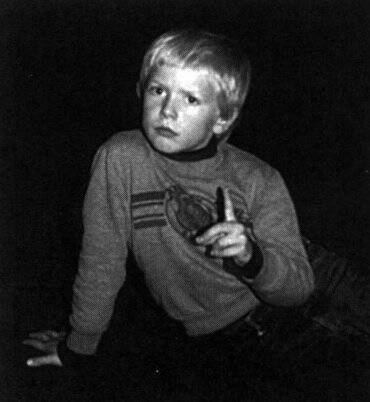
Helene Bore/BurzumVarg Vikernes as a child.
But rather than this instilling in him a sense of empathy for the children who did get hit, it instead seemed to foster a sentiment within him that whiteness was inherently superior. Based on his interviews, Vikernes seems to suggest that his views on race were influenced by his parents — his father, he said, was “pissed about all the colored people he saw in town” after the family got back to Norway, and his mother was purportedly worried he was “going to come home with a Black girl!”
At the same time, when his father found out he was displaying a swastika flag, he became “hysterical,” and his mother, when interviewed, said she “has no good explanation” of how her son developed his views. No matter how it happened, Vikernes’ views on race carried on into adulthood, and at certain points, he openly embraced neo-Nazism.
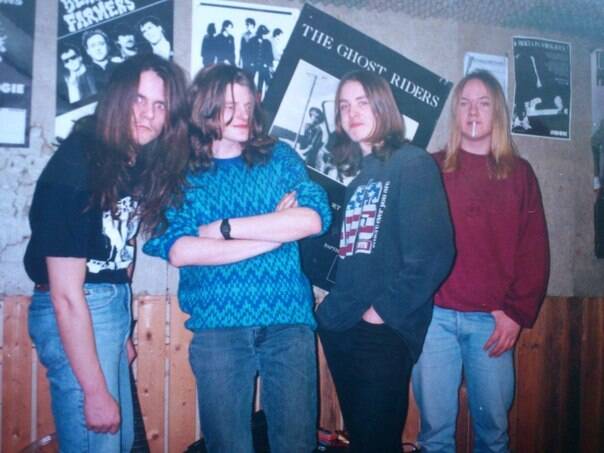
Varg Vikernes/BurzumVarg Vikernes (center right) with the band Old Funeral.
Meanwhile, he had grown up with a love of Tchaikovsky and other classical music, but as he entered his teenage years, he developed an interest in heavy metal, Iron Maiden in particular. He was also fascinated with the writing of J. R. R. Tolkien and created several projects based on elements from Tolkien’s The Lord of the Rings, including a band known as Uruk-Hai, referring to the strongest type of orc.
In fact, the name of his popular one-man project, Burzum, is taken directly from Middle-earth as well. In Tolkien’s world, “burzum” means “darkness” in the Black Speech of Mordor, and although Vikernes eventually lost interest in Tolkien, his early fascination somewhat explains Vikernes’ later obsession with Norse mythology and paganism.
Burzum, Mayhem, And The Explosion Of Norwegian Black Metal
Varg Vikernes started Burzum in 1991 and immediately became a defining figure of the early Norwegian black metal scene. His music stood out for its raw sound and its minimalistic compositions. He never performed live as Burzum, but that did little to affect his popularity.
In one interview with The Metal Crypt, Vikernes attributed some of Burzum’s popularity in Norway to his lyrics being in Norwegian, especially since other bands sang mostly in English. There was also the fact that Burzum was not a “real band,” but rather just Vikernes alone.
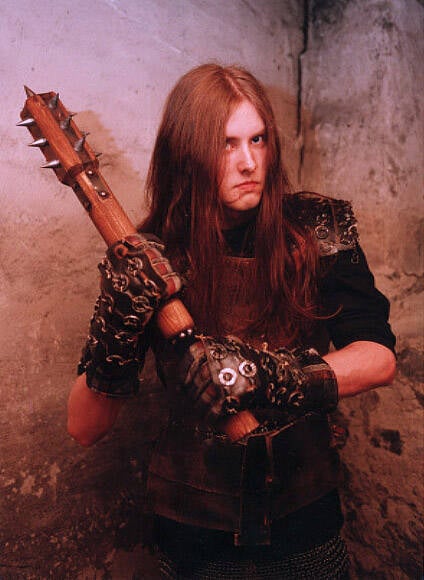
Varg Vikernes/BurzumVarg Vikernes in the early 1990s.
Still, it had boosted his reputation enough that the band Mayhem, which had been around since 1984, eventually asked Vikernes to join them as a bassist for their 1994 album De Mysteriis Dom Sathanas.
Meanwhile, Norway was plagued by a series of arsons directly targeting Christian churches. This was no coincidence. At the time, many Norwegian black metal groups were railing against Christianity, beyond simply being provocative. They also seemed to encourage violence.
As The Guardian covered in a 2019 feature, Mayhem singer Per Yngve “Dead” Ohlin would often self-harm on stage and cover audience members with his blood. When he killed himself in April 1991, the band’s guitarist Øystein “Euronymous” Aarseth took photographs of Ohlin’s bloody body, saying afterward: “It isn’t every day that you get to see a corpse, so you have to make the most out of it.”
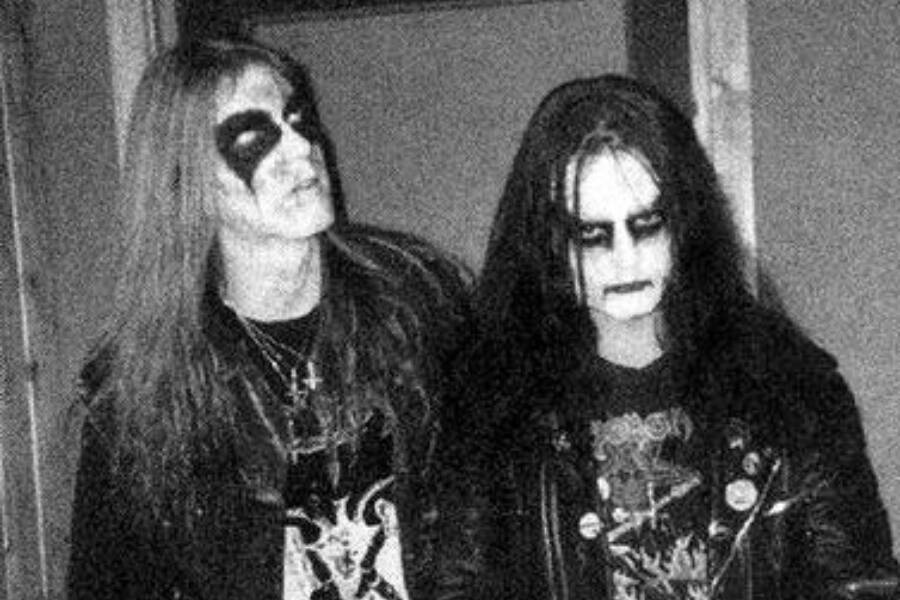
Wikimedia CommonsPer Yngve “Dead” Ohlin and Øystein “Euronymous” Aarseth.
Vikernes was not known for self-harming. Unlike some other Norwegian black metal artists, he did not believe in Satanism. Instead, he was more interested in Norse culture, paganism, and neo-Nazi postulates.
He also firmly believed that Christianity was imposing upon the true traditional values of Norway, especially since some Christian churches stood on the same ground where pagan temples once stood. When Fantoft stave church in Bergen was burned down in June 1992, Vikernes was one of the first people suspected of doing it. He wasn’t found guilty, but he would soon be implicated in several other arson attacks.
Meanwhile, tensions between Aarseth and Vikernes were growing. Though the two had once been close friends — and were even suspected of burning churches together — their friendship eventually soured. And soon, things would reach a boiling point.
The Murder Of Øystein “Euronymous” Aarseth
Many people in the scene had talked about “getting rid of” Aarseth before, particularly after Ohlin’s suicide, but the rivalry between him and Vikernes likely had nothing to do with the horrific photographs that Aarseth had taken of Ohlin’s body. They had different ideologies — Aarseth was a Satanist and a communist, whereas Vikernes was a pagan, a neo-Nazi, and a nationalist. Some theorize that Vikernes’ anger over Aarseth’s communist beliefs drove him to murder.
Others claim that Vikernes had grown to despise Aarseth for not being a “real” Norwegian because of his Lappish roots.
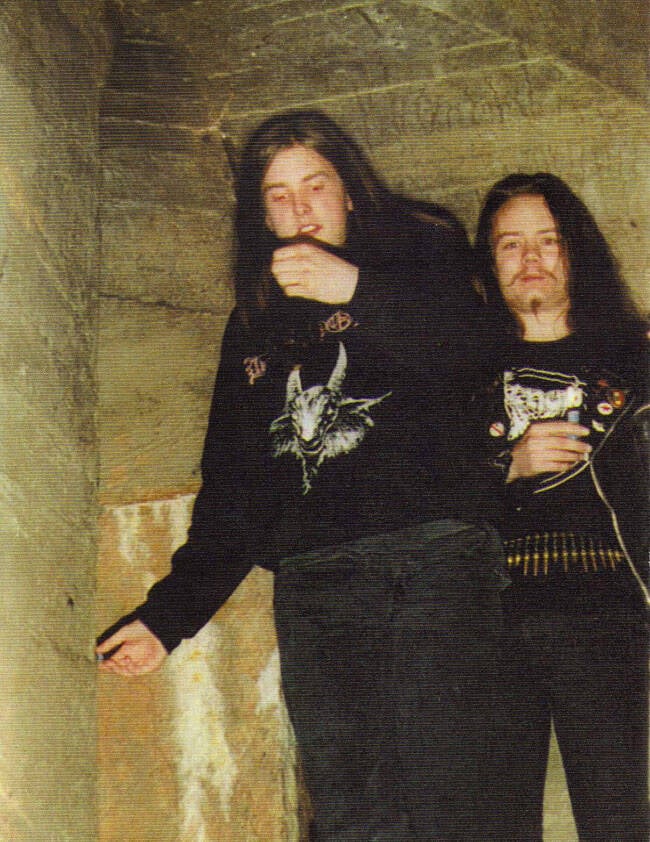
Varg Vikernes/BurzumVarg Vikernes and Øystein “Euronymous” Aarseth.
Meanwhile, Vikernes himself maintained that the killing was self-defense because Aarseth was allegedly conspiring to murder him due to Vikernes’ rising popularity in the Norwegian black metal scene.
At a certain point, Vikernes said he had heard Aarseth talking about tying him up and torturing him to death. Whether Aarseth ever said this or, more importantly, whether he intended to follow through is impossible to prove, but this was the story Vikernes always stood by. When he stabbed Aarseth, he alleged that he was trying to save his own life.
“People [have] claimed that I overreacted,” Vikernes later wrote on his Burzum website, “because Euronymous was such a wimp anyhow, and he didn’t have the guts to even try to kill me. Sure, he was a wimp, but this time he didn’t tell everybody about his plans, like he usually did. I took this serious because he only told a very few people he trusted, his closest friends — or those he believed were his closest friends anyhow… He was not a very sympathetic guy, and when he felt that he had his back against the wall he was capable of executing his plans. If scared enough even the biggest cowards become dangerous.”
Regardless of the real motive, on August 10, 1993, Vikernes got into an altercation with Aarseth at Aarseth’s apartment, which led to Vikernes pulling out a blade. The ensuing violence was brutal — Vikernes stabbed Aarseth 23 times, and the fatal wound was in Aarseth’s head. (Vikernes would later claim that some of Aarseth’s wounds came from Aarseth falling on pieces of a broken lamp during the pair’s fight.)

Scanpix/Arne Iversen/BurzumVarg Vikernes was sentenced to 21 years in prison for the murder of Aarseth, the maximum sentence in Norway.
Just days later, on August 19th, Vikernes was arrested. At his 1994 trial, he was sentenced to 21 years in prison for Aarseth’s murder, burning at least three churches, and possessing explosives. Given the brutality of the murder, 21 years seemed like a shockingly short sentence. It was, however, the maximum punishment under Norwegian law for the vast majority of crimes, which meant that even if he served it in full, the day would come that Varg Vikernes would be a free man once again.
Shockingly, Vikernes was released after serving 16 years of his sentence.
Varg Vikernes’ Life In Prison And His Controversies After His Release

Ingun Mæhlum/BurzumVarg Vikernes spent about 16 years in prison before he was released on parole.
Varg Vikernes eventually wrote a long reflection titled To Hell & Back Again: Part III: My Prison Story about his life in prison, which was quite different from the prisons most non-Norwegians would be familiar with. During his incarceration, he moved between various facilities in Bergen, Tønsberg, Ringerike, Trondheim, and Tromsø, where most of his necessities were provided for him, and he was kept in relative isolation.
Vikernes was able to compose music for Burzum while he was in prison, and he also authored the book Vargsmål. Infamously, he started a group called the Norwegian Heathen Front, which promoted pagan neo-Nazi ideologies, though he later distanced himself from them.
Conditions were hardly cruel, as Norwegian prisons have often been described as some of the most humane in the world, though Vikernes did later state in a YouTube video that the isolation took a toll on him.
“The media is very eager to describe Norwegian prisons as hotels,” he said in the video. “And what they don’t say is that the standard in different prisons varies a lot. So you do have very old-fashioned prisons and you have these modern prisons… It’s a different type of prison — there are no rapes in Norwegian prisons, there is less violence, but the isolation is extreme… When you’re serving time in Norwegian prisons, you’re completely isolated, and that’s the purpose.”

Wikimedia CommonsVarg Vikernes continued to produce music both in prison and after his release.
But after serving just 16 years of his sentence, Vikernes was released on parole in 2009. He officially changed his name to “Louis Cachet” to avoid public controversies, but he still used the name Varg Vikernes in his daily life. He also continued to put out music under the Burzum name.
Notably, Vikernes has faced legal trouble in the years since his early release. In 2013, he was arrested in France on suspicion of planning “a major terrorist act” after his wife acquired four rifles. He was released soon afterward due to lack of evidence, but he was later convicted of “inciting racial hatred” against Jews and Muslims in 2014. For that crime, he was given a six-month suspended sentence and an €8,000 fine.
He has often said that his years in prison changed him for the better and that he “learned from my mistakes” — but he has also stood by many of the same prejudiced views he’s held for most of his life. He even recently offered support for rapper Kanye West following his own antisemitic controversies, after West was pictured wearing a Burzum shirt.
Varg Vikernes said, “I think it shows courage to publicly wear a Burzum shirt, like he has done. You risk the wrath (including boycott) of an entire music industry, completely under the control of… ‘a certain group.’ So kudos to him for that.”
Next, take a deep dive into the wild world of ’80s hair metal. Then, read about the shocking death of metal icon Dimebag Darrell.





